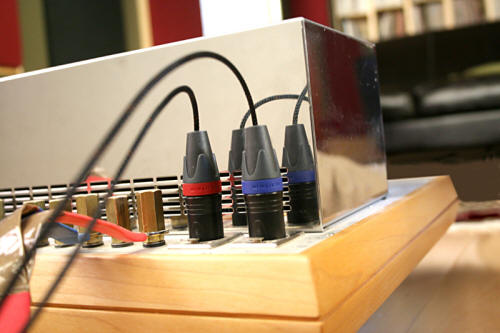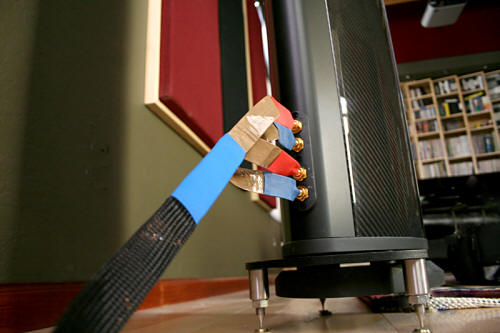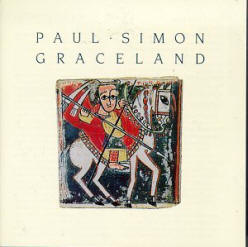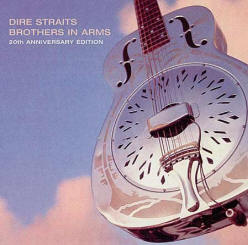
You are reading the older HTML site
Positive Feedback ISSUE
40november/december 2008
vacuum state electronics
Silver wire interconnects and copper foil speaker cables
as reviewed by Adam Goldfine

|
ADAM GOLDFINE'S SYSTEM
LOUDSPEAKERS
ELECTRONICS
SOURCES ANALOG: Music Hall MMF-7 turntable, Pro-ject 9 tonearm, Pro-Ject Speed Box Mk. II, Benz Micro ACE H cartridge, Magnum Dynalab FT-101A Tuner.
CABLES
ACCESSORIES
|
After completing my review of the Vacuum State Electronics Level 6 modified Sony DVP-S9000ES CD/SACD player, Allen Wright, president of VSE mentioned that to truly hear the player at its best, I should try some of his cables. Curious about what I might be missing, I took him up on the offer and had him send me two sets of balanced silver wire interconnects and one set of bi-wire copper foil speaker cables.
Available in kit form or as finished cables, the interconnects are constructed of three braided strands of very fine (.25mm diameter) polyurethane lacquer insulated silver wire terminated with silver Neutrik balanced connectors. The minimalist design results in a very thin and delicate cable.
The speaker cables, also available finished or as a kit, are flat copper ribbon designs, similar to the Goertz ribbon cables with which I have had great success in the past. I had Allen attach WBT spade connectors at the amplifier end and per his recommendation, 4mm MultiContact banana pins at the speaker end. The banana pins are very low mass and according to Allen, the best sounding connectors he knows.
The theoretical reasons for the superiority of these designs are outlined in a paper by Professor M. O. Hawksford titled "The Essex Echo" which is reproduced in its entirety in Allen Wright's, "The Super Cables Cookbook". The paper is full of graduate level mathematics well beyond the ability of most of us but Allen does a good job of explaining the concepts in much simpler terms within the book.
While the ideas expounded in the paper are beyond the scope of this review, if I understand it correctly, the crux of the matter is contained within this statement from Hawksford's paper, "Electromagnetic theory shows a cable to be a wave guide, the conductors acting as "guiding rails" for the electromagnetic energy that propagates principally through the space between the conductors . . ."
In other words, most of the signal travels in a field created around the conductor and not in the conductor itself. The less of the signal that travels in the conductor and the more that travels in the field, the better; this being determined by the conductor shape and thickness, geometry and dielectric. This is an over-simplification of more than 20 pages of somewhat radical theory (which I find both appealing and consistent with my listening results) but if you want to know more, buy Allen's book!

I initially installed just the speaker cables to get a handle on how they impacted the system and immediately had the sense that a layer of diffusion had been removed making everything a little sharper and vivid. Nothing was exaggerated or Technicolor, just a little more real and relaxed sounding, a little closer to live music.
Cueing up Vaclav Nelhybel's "Trittico", HDCD Sampler, (CD, Reference Recordings RR-S3CD), the first thing I noticed was the increased shading of tonal colors on the bass drum whacks. When I heard this track on a pair of KEF's $140,000/pair Muons I noticed subtle pitch changes in the decay of the bass drum that I just wasn't hearing in my system. At nearly ten times the cost, I could live with that. But with the VSE speaker cables in my rig, I heard even more subtlety in the decay than I had with the Muons. The decay lasted longer, I could hear the pitch drop as the drumhead slowed down and everything was just more present and alive.
Overall the sound became more transparent, with greater resolution of the leading edge of each note. The sound was relaxed and organic with nothing overly emphasized. Horns were brasher and blattier with greater impact and visceral presence. Bowed double basses had both more bite and greater subtlety in the woody resonance of the instrument. The word balanced kept coming to mind. Nothing was accented; I got more of everything in equal measure.
After living with the speaker cables for about a week I installed the interconnects, a one meter run between my CD player and preamp and a 2.5 meter run from the preamp to the amplifier. Though the bass was immediately tighter and the sound more detailed, initially the sound was a bit thin and brittle. Knowing that silver cables take longer to break in than copper, I let them cook for another week before doing any serious listening.
After about 100 hours, what was immediately noticeable was the exquisitely detailed, expansive, and immersive soundstage. After moving my equipment into my new, acoustically treated room I was concerned that it was over damped. Though the dryer acoustic was allowing me to hear deeper into recordings, the music seemed a bit lacking in life and soul. With the VSE interconnects I was now getting the best of both worlds. Their transparency and ability to resolve low level detail made instruments both more tightly focused and provided a greater sense of air and the original recording space. Each instrument was more distinct from the space and at the same time more realistically in the space. The unique size and character of the space itself was more clearly reproduced and at times the speaker end of my room seemed to disappear, replaced by the original recorded space.
Though I'm not familiar enough with the sound of pianos to distinguish between say a Steinway and a Bφsendorfer, I can easily tell that the two sound different from each other. With the VSE cables, for the first time in my system, the unique character of each piano was plainly evident. Listening to Dick Hyman play Duke Ellington's, "The Gal from Joe's", Reference Recordings HDCD Sampler, (CD, Reference Recordings RR-S3CD), the almost tactile growl of the Bφsendorfer 275SE Reproducing Piano (it's in the liner notes) was even more tactile. The physical reaction was like long fingernails lightly stroking the back of my neck sending chills down my spine. The piece had a lighter, bouncier and more agile feel but was in no way lightweight.
While simply miked acoustic albums were reproduced on a precise and natural sounding soundstage, well produced studio recordings were like sonic hallucinogens with sometimes trippy results. The range of instrument localization was greater than what I have experienced in the past, with sounds coming from well beyond and forward of the speakers. The artificial reverb and processing on some albums created an immersive listening experience, placing me in the middle of the mix in a way that had me enjoying studio albums to a much greater degree than usual.


Paul Simon's, Graceland (CD, Warner Brothers W2-25447) and Dire Straights', Brothers in Arms 20th Anniversary Edition (CD, Warner Brothers 49377-2) were both suitably lush and warm sounding with tightly focused instruments on a billowy, if artificial, soundstage. Donald Fagen's vocals on Steely Dan's "Babylon Sisters", Gaucho (SACD, MCA B0000868-36), which can get lost in the mix, were more articulate and intelligible. Corinne Bailey Rae's overly dry, closely miked voice on Corinne Bailey Rae (CD, Capitol CDP 0946 3 66361 2 2), was pushed even more forward which on the whole produced a better balance with the slightly thick and overripe bass.
It wasn't until I used it as a test track at the recent Rocky Mountain Audio Fest that I realized how much of a challenge Marcus Miller's M2 (CD, Telarc CD-83534) is for a system to reproduce. If you want to see what a system is made of, cue this disc up to track 9, "Cousin John". The track, and the whole album for that matter, is so dense and heavy with electric and synthesized bass that there is no sense of ambient space, real or otherwise, and on anything less than a very well sorted system, instruments tend to congeal sounding thick and muddy. Not surprisingly 80% of the systems I auditioned at RMAF fell apart with this track but on a top flight system, the sound is spectacular.
My system has always been able to unravel this complex mix and with the VSE cables installed I heard increased articulation and punch in the bass with greater separation and distinction of the higher register instruments. The B flat clarinet stood in greater relief from the intertwining bass lines, its tonal character intact, sounding palpable and real; no easy feat given what is happening below,. The bass clarinet in the opening bars also sounded more like a real instrument retaining its haunting woody resonance.
I haven't auditioned many different cables in my system though I have heard the magnitude of the impact a wide range of cables has made in other systems. I can safely say that I have a good sense of the difference cables make in general and what one can expect going from a modest cable to a mid level cable to a top flight cable, the caveat being of course that it is all system dependent. The magnitude of difference the VSE cables made in my system was on the order of what one should expect from the best cables available. They locked in very nicely with my set up and provided a significant increase in delicacy, transparency and resolution without emphasizing any one aspect of the sound. They did not leave me wanting for anything and I suspect their balanced sound would make them a good match for many systems.
If you are handy with a soldering iron and buy the cables in kit form they are even more affordable and can be constructed without the protective sheathing which makes them, according to Allen, even better sounding and also more fragile. Silver foil cables (the same silver foil used internally in the VSE CD/SACD modifications) are said to provide even greater resolution and delicacy though are limited in available lengths due to high capacitance. I will have to get my hands on a pair of them next! None of the cables are available either in finished form or kit form in lengths greater than three meters.
As I have come to expect from Allen Wright, he has created an excellent product at a relatively affordable price. They have become my new reference. Adam Goldfine
Vacuum
State GmbH
Allen
Wright, Founder & CEO
Buesingerstr. 5
8203 Schaffhausen
Switzerland
TEL: + 41 52 62035 81
web address: www.vacuumstate.com
Pricing:
Note that all prices are in Euros (currently 1.27 USD per 1 EUR) directly from Vacuum State's web site. Finished cables are available from VSE's US agents and pricing may vary with fluctuations in the exchange rate. Kits are only available direct from VSE.
Factory Finished Interconnects
1 Meter Silver Wire Balanced: 495
Each Add'l Meter 150
1 Meter Silver Wire Single Ended: 495
Each Add'l Meter 150
1 Meter Silver Foil Balanced: 595
Each Add'l Meter 250
1 Meter Silver Foil Single Ended: 495
Each Add'l Meter 200
Factory Finished Speaker Cables
First Meter 595
Each Add'l Meter 250
First Meter Bi-Wire 1000
Each Add'l Meter 500
Kit Form Interconnects
1 Meter Silver Wire Balanced: 195
Each Add'l Meter 50
1 Meter Silver Wire Single Ended: 195
Each Add'l Meter 50
1 Meter Silver Foil Balanced: 245
Each Add'l Meter 75
1 Meter Silver Foil Single Ended: 195
Each Add'l Meter 50
Kit Form Speaker Cables
First Meter 245
Each Add'l Meter 75
First Meter Bi-Wire 490
Each Add'l Meter 150

